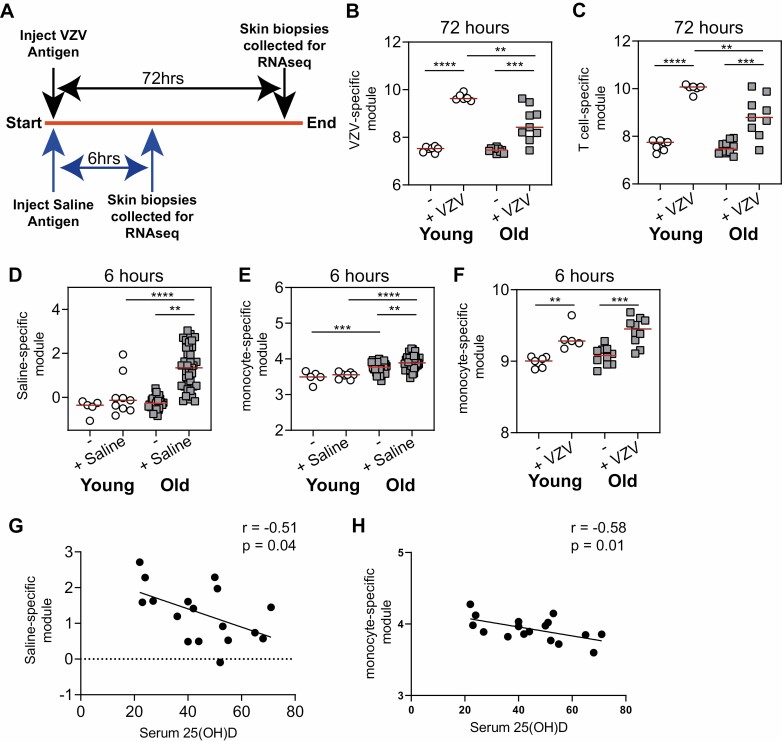Figure 1.
Decreased cutaneous immunity with age correlates with vitamin D insufficiency. (A) study schematic, young (white) and old (grey) individuals were injected with either antigen or saline and biopsies were collected at specified time points and RNAseq or microarray analysis was performed. Samples were compared to normal [unmanipulated; - (young n = 5 and old n = 32)] skin. (B) Antigen-specific gene module was generated and (C) T cell-specific gene module in VZV-injected skin (72 hours post-injection; young n = 6 and young n = 9). (D) saline-specific gene module and (E) monocyte-specific gene module in saline injected skin (6 hours post-injection; young n = 9 and old n = 37). (F) Monocyte-specific gene module in VZV injected skin (6 hours post-injection; young n = 6 and young n = 9). (G) Saline-specific module and (H) monocyte-specific module in saline-injected skin from old donors was correlated with serum 25(OH)D concentrations (nmol/l). B–F were analysed with an unpaired t test and G and H were analysed by a Pearson correlation test. **P < 0.01; ***P < 0.001; ****P < 0.0001.

